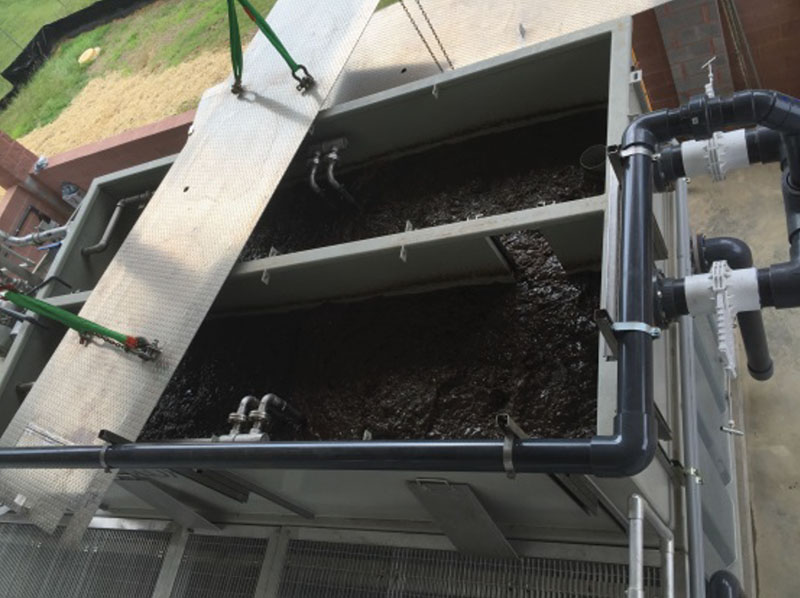A community-led water-testing project made up of households that rely on private well water with high arsenic levels saw on average a 47 percent drop in participants’ urinary arsenic levels after filters were installed and a digital health program was implemented, according to a new study led by researchers at the Johns Hopkins Bloomberg School of Public Health. Over the two-year study period, participating households were contacted to encourage use of the filter and remind users to replace the filter cartridge.
For the study – a randomized controlled trial in American Indian communities in the Northern Great Plains – so-called “point of use” arsenic filters were installed in households whose private wells had arsenic concentrations greater than the Environmental Protection Agency’s recommended limit of 10µg/L. Each of the study’s 50 participating household had two faucets on their kitchen sink: an arsenic filter faucet for drinking and cooking water installed by a community plumber for the study and the main kitchen faucet used for handwashing and washing dishes.
Study participants also reported a significant increase in their household’s exclusive use of arsenic-filtered water for drinking and cooking.
The researchers partnered closely with community members, tribal organizations, and the Indian Health Service throughout the program’s design and implementation to ensure the program suited the needs of the community and to address potential barriers to using the filters. The findings were published online March 27 in Environmental Health Perspectives.
“This trial shows the potential of digital health intervention programs like this to reduce environmental exposures, and may help alleviate costs associated with home visits for intervention delivery,” says Christine Marie George, PhD, a professor in the Bloomberg School’s Department of International Health and the study’s co-first author.
Around two million people in the U.S. use private wells with elevated arsenic levels, according to the Environmental Protection Agency. Rural and American Indian communities that rely on well water are disproportionately affected. Prior research has shown an association between arsenic exposure and the development of cardiovascular disease, diabetes, kidney disease, impaired lung function, and various cancers among American Indian communities.
Study participants’ arsenic levels were checked via urine samples collected at the beginning of the study and again after two years.
For their randomized controlled trial, the researchers recruited households through a community-led water arsenic-testing project that found arsenic levels above the EPA guideline in 29 percent of the 440 tested wells. Of these, 114 households met eligibility criteria to be enrolled in the study. Eighty-four participants from 50 of these 114 households participated in the study.
Participating households were divided into two study arms, with 51 participants in Arm 1 (27 households) and 33 participants in Arm 2 (23 households). Arm 1 consisted of the installation of a point of use filter with follow-up phone messages to encourage use of the filter. Arm 2 consisted of a point of use filter and follow-up phone calls and texts, plus home visits from community members, supporting print materials, and videos of community testimonials in support of the filters.
The study was conducted between July 2018 and May 2021. Tracy Zacher, RN, field office director of the American Indian-owned Missouri Breaks Industries Research, Inc., and the study’s co-first author, led the study recruitment and evaluation activities and the arsenic testing.
Study participants’ arsenic levels were checked via urine samples collected at the beginning of the study and again after two years. Overall, there was a reduction in urinary arsenic levels on average by 47 percent during the two-year follow-up period, with no significant difference between the two study arms. Households reported exclusive use of arsenic-safe water to prepare food and drinks increased significantly from 11 percent at the start of the study to 42 percent of households by the study’s end. There also was no significant difference between study arms for this outcome.
“It is very exciting that the less intensive arm of the study that only provided phone calls and a filter worked just as well,” says George. “Additional studies are needed to evaluate this digital health approach in other arsenic-impacted settings in the U.S. and globally.”
The authors believe this is the first randomized controlled trial study of an arsenic mitigation program in the Americas. George credits much of the program’s success to the researchers’ collaboration with the impacted communities.
“Effect of an Arsenic Mitigation Program on Arsenic Exposure in American Indian Communities: A Cluster Randomized Controlled Trial of the Community-Led Strong Heart Water Study Program” was written by Christine Marie George, Tracy Zacher, Kelly Endres, Francine Richards, Lisa Bear Robe, David Harvey, Lyle G Best, Reno Red Cloud, Annabelle Black Bear, Leslie Skinner, Christa Cuny, Ana Rule, Kellogg J. Schwab, Joel Gittelsohn, Ronald Glabonjat, Kathrin Schilling, Marcia O’Leary, Elizabeth D. Thomas, Jason Umans, Jianhui Zhu, Lawrence H. Moulton, and Ana Navas-Acien.
The research was supported by the National Institute of Environmental Health Sciences (NIEHS), National Institutes of Health (NIH R01ES025135).










